General Dynamics ASCOD 2 armored vehicle family project
The development of the ASCOD 2 project was carried out by General Dynamics European Land Systems Santa Bárbara Sistemas - one of the creators of the ASCOD basic machine (Austrian Spanish Cooperative Development - “Austrian-Spanish joint development”), which became part of General Dynamics at the beginning of the last decade. The aim of the project was to change the design of the armored vehicle, taking into account the experience of recent conflicts and using modern technologies. By changing the main components and assemblies of the prospective machine, it was possible to significantly increase the level of protection and effectiveness of armaments, as well as preserve or improve other characteristics.
In order to preserve the continuity and unification of structures, the ASCOD 2 project implies the use of some old components and assemblies borrowed from the base machine. In addition, the main aspects of the project, such as the layout and architecture of weapons, are preserved. This allowed without special difficulties to improve the basic characteristics without the need for excessively complicating the project.
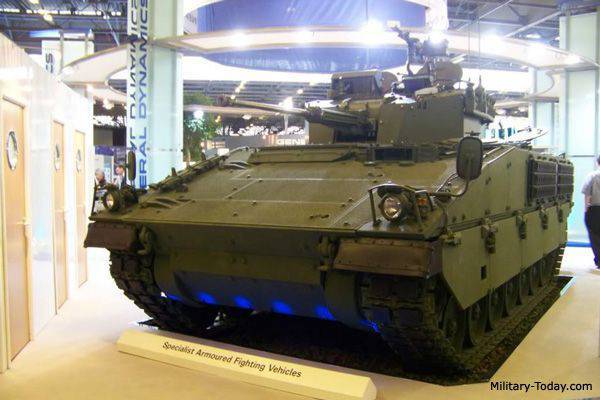
Prototype ASCOD 2 in BMP configuration. Photo Military-today.com
One of the main objectives of the ASCOD 2 project was to increase the level of protection, including against new threats. At the beginning of the two thousandth, Spain took part in operations in Afghanistan, but its contingent in the ISAF did not use the latest ASCOD Pizarro infantry fighting vehicles. The main reason for this was the absence of any acceptable mine protection as part of the original or additional equipment. Thus, the new armored vehicle was supposed to receive protection against the detonation of explosive devices. In addition, the military was no longer fully satisfied with the basic ballistic protection of ASCOD, which also had an impact on the requirements for promising technology.
To increase the level of protection, the shape and design of the case has been changed. In particular, a new bottom of the "mine protection" design has appeared. It is proposed to manufacture the body from combined armor that can withstand hitting large-caliber small bullets. weapons. In addition, it offers a set of additional mounted modules, significantly improving protection. According to reports, a full set of all built-in and additional tools allows you to protect the crew and internal units from 25 mm shells when firing from any angles. Mine protection, allegedly, withstands the undermining of 10 kg of TNT under the caterpillar or any point on the bottom of the hull.
The ASCOD 2 project provides for the use of additional means of protection of a different kind. The armored vehicles of this model can be equipped with various countering systems, including active protection complexes like the Saab LEDS-150 or Rafael Trophy. The use of such systems should ensure the survival of the vehicle not only when firing small arms or small-caliber artillery, but also when the enemy uses full-fledged anti-tank weapons.
Despite all the improvements, the layout of the case remains the same. The engine compartment is located in front of the machine, most of its units are located at the right side. To his left there is a small office compartment with a workplace for the driver. Behind the engine compartment and the driver is the fighting compartment with a place to install a tower or other combat module. Feed in most modifications is given under the place for the landing.
In connection with the proposed modifications, the upgraded ASCOD 2 machine is obtained significantly larger and heavier than the base version. In the course of the modernization, the length of the vehicle increases to 7,6 m, the width remains at the level of 3,4 m. In the configuration of an infantry fighting vehicle with a turret and cannon armament, the height of the roof of the tower reaches 2,8 m. When installing a complete set of mounted modules, the ASCOD 30 combat mass must reach 2 t.
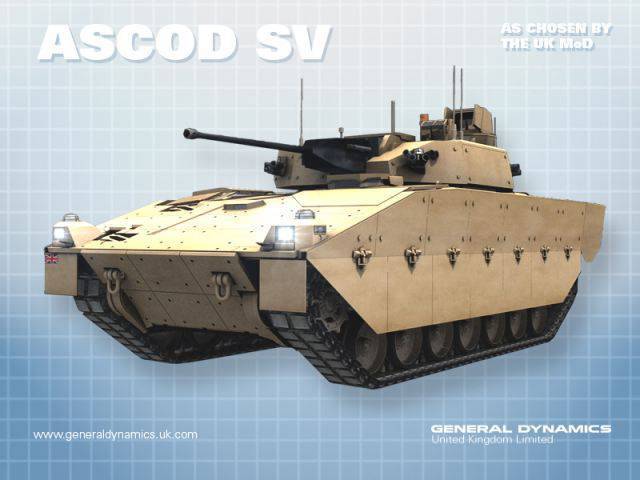
General Dynamics company poster
The increase in combat mass led to the upgrade of the power plant. To preserve the characteristics of mobility at the level of the base sample, a diesel engine MTU V8 199 T21 with the power 805 hp was proposed, coupled with the Renk HSLW256B transmission. Depending on the configuration of the protective equipment and their composition, such an engine provides power density at the level of the 19-27 hp. per ton. At the same time, it is alleged that the possibility of driving on the highway at speeds up to 70 km / h. Power reserve is determined at the level of 500 km.
The ASCOD 2 undercarriage is not different in its architecture from the predecessor car units, however, it was improved due to the increased weight of the car. As before, seven track rollers are provided on board, each of which has an individual torsion bar suspension. Also in the design of the chassis there are additional shock absorbers. Driving wheels are located in the front of the sides, guides - in the stern. Some modifications undergone caterpillar base machine.
Improving the power plant and chassis allowed us to maintain the mobility parameters or slightly improve them. The upgraded ASCOD 2 is capable of crossing a ditch with a width of the order of 2,5 m and climbing a wall about 90 height in cm. It is possible to climb the slope of 60% and roll up to 40%. The updated armored vehicle did not have the opportunity to swim, because of which it had to cross water obstacles ford. The maximum depth of the reservoir should not exceed 1,5 m.
The basic version of the ASCOD 2 family of armored vehicles, which has been regularly shown at exhibitions over the past years, is an infantry fighting vehicle. In this configuration, the crew of the car consists of three people: the driver, the commander and the gunner. The driver’s workplace is located in the front of the hull, the other two crew members are in a double swing tower. The crew has three hatches in the roof of the hull and the tower. To monitor the surrounding space, their workplaces are equipped with a set of periscopic and opto-electronic devices.
Aft hull is given under the troop compartment with seats for seven fighters with weapons. For landing and disembarking, a stern ramp with a door and several hatches in the roof are provided. An important innovation of the project ASCOD 2 is a set of measures aimed at reducing the damage from mine explosions. One of the elements of this complex are special crew and landing seats that absorb part of the energy of an explosion and thereby reduce the likelihood of injury.
The models of the BMP ASCOD 2 demonstrated at the exhibitions have a turret with weapons, which is a further development of the combat modules installed on the equipment for Spain and Austria. On the roof of the hull, with a shift to the starboard side, there is a tower assembled from armor plates and equipped with additional protection. The levels of defense of the tower and the hull are the same. Inside the tower is all the weapons, control systems, as well as the place of the commander and gunner.
The ASCOD 2 turret carries a twin installation with an Mauser MK-30 / 2 automatic cannon, caliber 30 mm and 7,62-mm machine gun. The type of machine gun is determined in accordance with the wishes of the customer. The gun mount is stabilized in two planes. The available drives allow horizontal guidance in any direction, the vertical firing sector is from -10 ° to + 50 °. 200-300 shells for the cannon and order 600 cartridges for the machine gun can be placed in the fighting compartment. Additional armament consists of several 76-mm smoke grenade launchers. They can be located on the sides of the tower, in the front or rear.
The turret of the new BMP is equipped with a fire control system from the American company Curtiss-Wright Controls, which consists of combined (day and night) sights, a laser range finder, a ballistic computer, etc. equipment. Apparently, at the request of the customer, the tower can be completed with other control equipment.
The project ASCOD 2 initially laid the possibility of using the basic tracked armored chassis as the basis for military equipment of various classes. In addition to the infantry fighting vehicle, customers are offered an armored personnel carrier, a light tank, a command and staff vehicle and other military equipment options. From the base BMP they differ in the set of weapons and special equipment that meets the assigned tasks.
To date, several prototypes of the ASCOD 2 armored personnel carrier have been built and tested. It differs from the BMP by the absence of a tower and a slightly different arrangement of the internal volumes of the hull. Its crew consists of two people and is located inside the hull. In this case, the duties of the gunner assigned to the commander. Due to the absence of the “old” fighting compartment in the corps, eight places are provided for the landing. On the roof of the armored personnel carrier can be installed combat modules with remote control of various types. It is assumed that the BSC ASCOD 2 will be armed with rifle-caliber machine guns or large-caliber systems.
Of particular interest is General Dynamics’s proposal for lightweight tank. In this version, a tower with a gun of a caliber of 105 or even 120 mm should be installed on the shoulder strap of the hull. Similar proposals existed during the development of the ASCOD project, and with the advent of its modernized version were slightly changed. As a combat module for a light tank based on ASCOD 2, several systems with different guns are considered.
The development company proposed two projects for upgrading the existing ASCOD-based BMPs of versions Ulan (Austria) and Pizarro (Spain). Projects with the additional designation Phase 2 involve the integration of new solutions and components in the design of existing equipment. According to some information, at present the Spanish army receives armored vehicles of the ASCOD Pizarro family in the version of “2 Phase”. The Austrian armed forces, in turn, are not yet ready to purchase new armored vehicles, which is why they continue to operate the Ulanov 112 in its basic configuration.
In 2008, General Dynamics European Land Systems and Krauss-Maffei Wegmann presented the promising Donar self-propelled artillery. As the basis for this ACS, the modified ASCOD 2 chassis was taken. During the development of the chassis has lost a recognizable base body, and also received a new double "car" cabin and a platform for an artillery combat module. Despite the new look, the Donar ACS chassis has a high degree of unification with ASCOD 2.
At the end of the last decade, an ASCOD DK armored personnel carrier was developed for the Danish army. The Danish Armed Forces have a large number of American-made obsolete M113 BTRs that need to be replaced. ASCOD DK is a modified version of the ASCOD Pizarro Phase 2 infantry fighting vehicle with MTU engine V8 199 with a power 710 hp, enhanced armor and weapons that meet the requirements of the Danish military. In 2013, such a machine was sent to Denmark for comparative tests. According to reports, the final decision on the procurement of ASCOD DK or other equipment of this class has not yet been made.
At the end of the last decade, the ASCOD 2 infantry fighting vehicle project with notable modifications was submitted to the UK Department of Defense. The updated version of the project soon received the designation Scout Specialist Vehicle (Scout SV) and differed from the basic model of the new turret with weapons. At the request of the customer, Scout SV should carry a combat module with an 40-mm automatic cannon using telescopic ammunition. Also, some changes are required to make the composition of electronic equipment.
The Scout SV project is of particular interest because it should be the basis for the modernization of the fleet of armored vehicles of the ground forces of Great Britain. In the foreseeable future, it is planned to purchase not only infantry fighting vehicles, but also equipment of other classes, including command and staff, engineering, repair-evacuation and other vehicles. According to current plans, deliveries of new types of serial machines will start in the 2017 year.
The fundamentals of the ASCOD project, laid down by Austrian and Spanish experts as far back as the eighties, are still relevant, thanks to which with the help of some improvements affecting certain structural elements, it is possible to create modern military equipment. Armored vehicles of the ASCOD 2 family have already interested some potential customers, and in the case of Great Britain they even became the subject of a contract for the development of a new project and are the basis of the modernization program for the ground forces. Thus, the development of the family continues, and new types of equipment will be operated over the next few decades.
On the materials of the sites:
http://gdels.com/
http://military-today.com/
http://armyrecognition.com/
http://miltechmag.com/
http://globalsecurity.org/
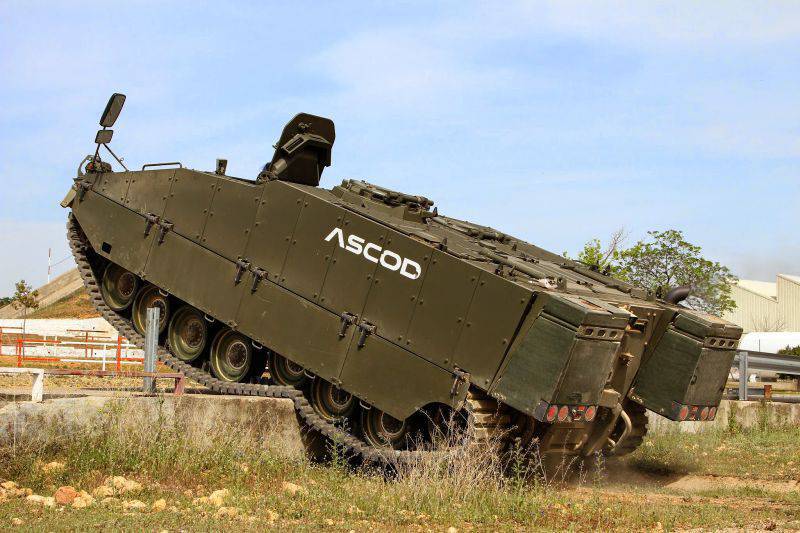
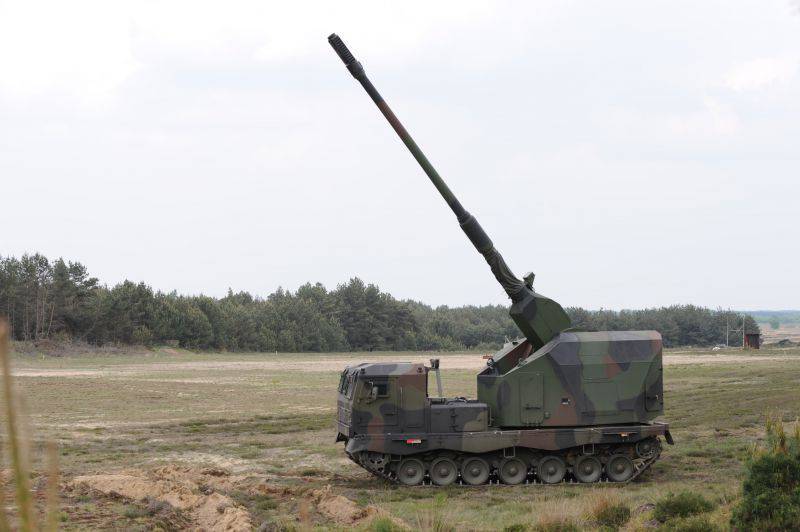
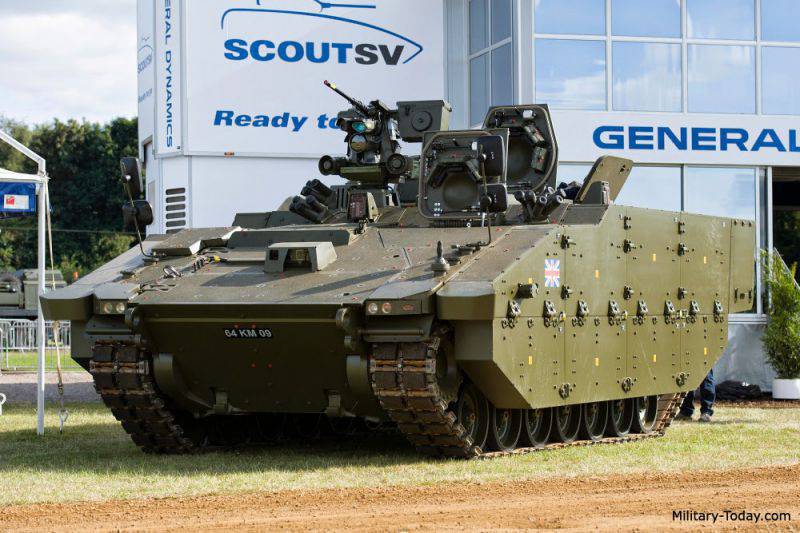
Information